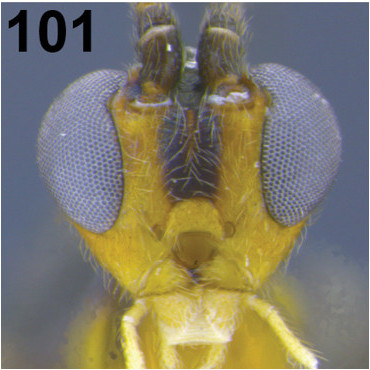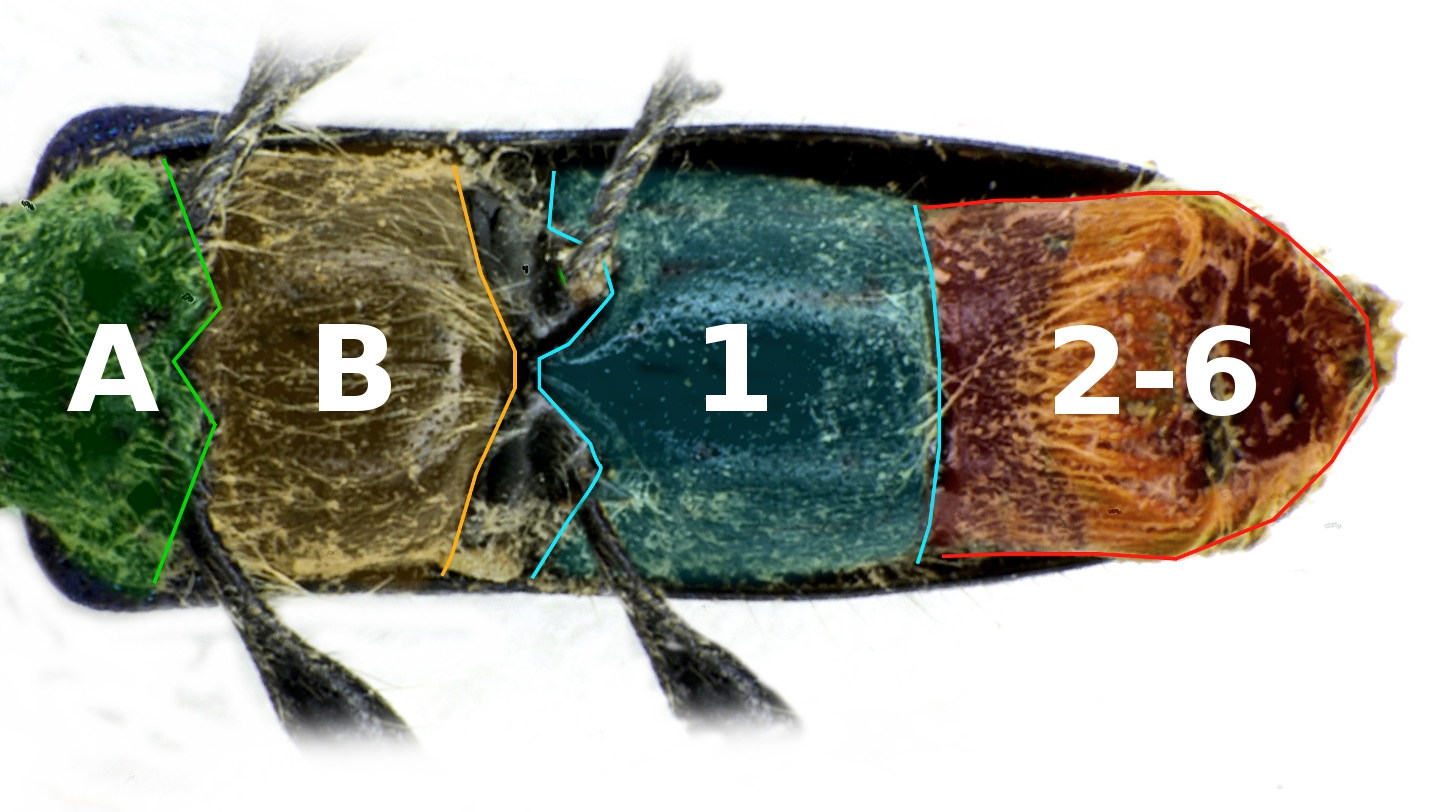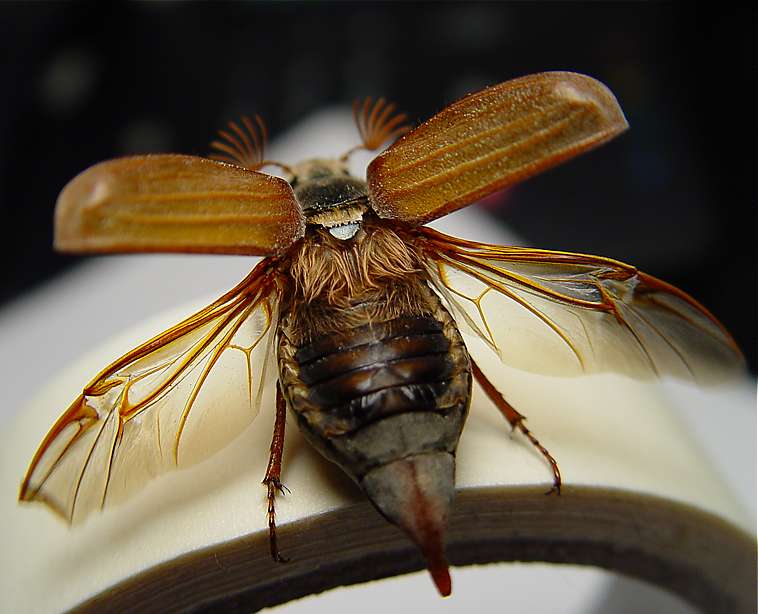|
Bolitotherus Cornutus
''Bolitotherus cornutus'' is a North American species of darkling beetle known as the horned fungus beetle or forked fungus beetle. All of its life stages are associated with the fruiting bodies of a wood-decaying shelf fungus, commonly ''Ganoderma applanatum'', ''Ganoderma tsugae'', and ''Ganoderma lucidum''. Description Adults are brown, armored beetles, long. They are sexually dimorphic; males have two sets of horns and females lack horns. Males use their horns, clypeal and thoracic, to compete for mates. Unlike many species of scarab beetles that exhibit male dimorphism for horns with major and minor morphs,Emlen DJ (1996) Artificial selection on horn length body size allometry in the horned beetle ''Onthophagus acuminatus'' (Coleoptera: Scarabaeidae). Evolution 50: 1219–1230. doi:10.2307/2410662 male ''B. cornutus'' possess a continuous range of horn and body sizes.Conner JK (1988) Field measurements of natural and sexual selection in the fungus beetle, ''Bolitotherus ... [...More Info...] [...Related Items...] OR: [Wikipedia] [Google] [Baidu] |
Georg Wolfgang Franz Panzer
Georg Wolfgang Franz Panzer (31 May 1755 – 28 June 1829) was a German botanist and entomologist. He was born at Etzelwang in the Upper Palatinate and died at Hersbruck, near Nuremberg. He was the son of (the elder, 1729-1805), one of the most distinguished and productive of German bibliographers, whose ''Annales Typographici'' were published between 1793 and 1803.G.W. Panzer, ''Annales Typographici ab Artis Inventae Origine usque ad annum MDXXXVI'', 11 Vols (Impensis Joannis Eberhardi Zeh, Bibliopolae, Norimbergae 1793-1803). A physician, he practised at Hersbruck. A celebrated botanist, he had a very species-rich herbarium A herbarium (plural: herbaria) is a collection of preserved plant specimens and associated data used for scientific study. The specimens may be whole plants or plant parts; these will usually be in dried form mounted on a sheet of paper (calle .... He also assembled a very important insect collection which was the basis of a vast work ''Faunae ... [...More Info...] [...Related Items...] OR: [Wikipedia] [Google] [Baidu] |
Abdomen
The abdomen (colloquially called the belly, tummy, midriff, tucky or stomach) is the part of the body between the thorax (chest) and pelvis, in humans and in other vertebrates. The abdomen is the front part of the abdominal segment of the torso. The area occupied by the abdomen is called the abdominal cavity. In arthropods it is the posterior tagma of the body; it follows the thorax or cephalothorax. In humans, the abdomen stretches from the thorax at the thoracic diaphragm to the pelvis at the pelvic brim. The pelvic brim stretches from the lumbosacral joint (the intervertebral disc between L5 and S1) to the pubic symphysis and is the edge of the pelvic inlet. The space above this inlet and under the thoracic diaphragm is termed the abdominal cavity. The boundary of the abdominal cavity is the abdominal wall in the front and the peritoneal surface at the rear. In vertebrates, the abdomen is a large body cavity enclosed by the abdominal muscles, at front and to ... [...More Info...] [...Related Items...] OR: [Wikipedia] [Google] [Baidu] |
Articles Containing Video Clips
Article often refers to: * Article (grammar), a grammatical element used to indicate definiteness or indefiniteness * Article (publishing), a piece of nonfictional prose that is an independent part of a publication Article may also refer to: Government and law * Article (European Union), articles of treaties of the European Union * Articles of association, the regulations governing a company, used in India, the UK and other countries * Articles of clerkship, the contract accepted to become an articled clerk * Articles of Confederation, the predecessor to the current United States Constitution * Article of Impeachment, a formal document and charge used for impeachment in the United States * Articles of incorporation, for corporations, U.S. equivalent of articles of association * Articles of organization, for limited liability organizations, a U.S. equivalent of articles of association Other uses * Article, an HTML element, delimited by the tags and * Article of clothing, ... [...More Info...] [...Related Items...] OR: [Wikipedia] [Google] [Baidu] |
Tenebrionidae
Darkling beetle is the common name for members of the beetle family Tenebrionidae. The number of species in the Tenebrionidae is estimated at more than 20,000 and the family is cosmopolitan in distribution. Taxonomy ''Tenebrio'' is the Latin generic name that Carl Linnaeus assigned to some flour beetles in his ''10th edition of Systema Naturae'' 1758-59. The word means "seeker of dark places" (or figuratively a trickster); an English language analogy is "darkling". Numerous Tenebrionidae species do inhabit dark places, however, there are many species in genera such as ''Stenocara'' and ''Onymacris'', which are active by day and inactive at night. The family covers a varied range of forms, such that classification presents great difficulties. These eleven subfamilies were listed in the 2021 review by Bouchard, Bousquet, ''et al.'', updating a similar catalog from 2005.Bouchard, Patrice. Lawrence, John F. Davies, Anthony E. Newton, Alfred F. Synoptic Classification of the World T ... [...More Info...] [...Related Items...] OR: [Wikipedia] [Google] [Baidu] |
Braconidae
The Braconidae are a family of parasitoid wasps. After the closely related Ichneumonidae, braconids make up the second-largest family in the order Hymenoptera, with about 17,000 recognized species and many thousands more undescribed. One analysis estimated a total between 30,000 and 50,000, and another provided a narrower estimate between 42,000 and 43,000 species. Classification The Braconidae are currently divided into about 47 subfamilies and over 1000 genera, which include '' Aerophilus'', '' Aleiodes'', '' Apanteles'', '' Asobara'', '' Bracon'', '' Cenocoelius'', '' Chaenusa'', '' Chorebus'', ''Cotesia'', '' Dacnusa'', ''Diachasma'', ''Microgaster'', '' Opius'', '' Parapanteles'', '' Phaenocarpa'', '' Spathius'', and '' Syntretus.'' These fall into two major groups, informally called the cyclostomes and noncyclostomes. In cyclostome braconids, the labrum and the lower part of the clypeus are concave with respect to the upper clypeus and the dorsal margin of the mandi ... [...More Info...] [...Related Items...] OR: [Wikipedia] [Google] [Baidu] |
In Copula
Sexual intercourse (or coitus or copulation) is a sexual activity typically involving the insertion and thrusting of the penis into the vagina for sexual pleasure or reproduction.Sexual intercourse most commonly means penile–vaginal penetration for sexual pleasure or sexual reproduction; dictionary sources state that it especially means this, and scholarly sources over the years agree. See, for example; * * * * * * * * * This is also known as vaginal intercourse or vaginal sex. Other forms of penetrative sexual intercourse include anal sex (penetration of the anus by the penis), oral sex (penetration of the mouth by the penis or oral penetration of the female genitalia), fingering (sexual penetration by the fingers) and penetration by use of a dildo (especially a strap-on dildo). These activities involve physical intimacy between two or more individuals and are usually used among humans solely for physical or emotional pleasure and can contribute to human bonding. Ther ... [...More Info...] [...Related Items...] OR: [Wikipedia] [Google] [Baidu] |
Frass
Frass refers loosely to the more or less solid excreta of insects, and to certain other related matter. Definition and etymology ''Frass'' is an informal term and accordingly it is variously used and variously defined. It is derived from the German word ''Fraß'', which means the food takeup of an animal.M. Clark and O. Thyen. The Oxford-Duden German Dictionary. Publisher: Oxford University Press 1999. The English usage applies to excreted residues of anything that insects had eaten, and similarly, to other chewed or mined refuse that insects leave behind. It does not generally refer to fluids such as honeydew, but the point does not generally arise, and is largely ignored in this article. Such usage in English originated in the mid-nineteenth century at the latest. Modern technical English sources differ on the precise definition, though there is little actual direct contradiction on the practical realities. One glossary from the early twentieth century speaks of "...excreme ... [...More Info...] [...Related Items...] OR: [Wikipedia] [Google] [Baidu] |
Sternite
The sternum (pl. "sterna") is the ventral portion of a segment of an arthropod thorax or abdomen. In insects, the sterna are usually single, large sclerites, and external. However, they can sometimes be divided in two or more, in which case the subunits are called sternites, and may also be modified on the terminal abdominal segments so as to form part of the functional genitalia, in which case they are frequently reduced in size and development, and may become internalized and/or membranous. For a detailed explanation of the terminology, see Kinorhynchs have tergal and sternal plates too, though seemingly not homologous with those of arthropods.Sørensen, M. V. et al. Phylogeny of Kinorhyncha based on morphology and two molecular loci. PLoS One 10, 1–33 (2015). Ventrites are externally visible sternites. Usually the first sternite is covered up, so that vertrite numbers do not correspond to sternid numbers. The term is also used in other arthropod groups such as crustacea ... [...More Info...] [...Related Items...] OR: [Wikipedia] [Google] [Baidu] |
Copulation (zoology)
In zoology, copulation is animal sexual behavior in which a male introduces sperm into the female's body, especially directly into her reproductive tract. This is an aspect of mating. Many animals that live in water use external fertilization, whereas internal fertilization may have developed from a need to maintain gametes in a liquid medium in the Late Ordovician epoch. Internal fertilization with many vertebrates (such as all reptiles, some fish, and most birds) occurs via cloacal copulation, known as cloacal kiss (see also hemipenis), while mammals copulate vaginally, and many basal vertebrates reproduce sexually with external fertilization. In spiders and insects Spiders are often confused with insects, but they are not insects; instead, they are arachnids. Spiders have separate male and female sexes. Before mating and copulation, the male spider spins a small web and ejaculates on to it. He then stores the sperm in reservoirs on his large pedipalps, from which he ... [...More Info...] [...Related Items...] OR: [Wikipedia] [Google] [Baidu] |
Elytra
An elytron (; ; , ) is a modified, hardened forewing of beetles (Coleoptera), though a few of the true bugs ( Hemiptera) such as the family Schizopteridae are extremely similar; in true bugs, the forewings are called hemelytra (sometimes alternatively spelled as "hemielytra"), and in most species only the basal half is thickened while the apex is membranous, but when they are entirely thickened the condition is referred to as "coleopteroid". An elytron is sometimes also referred to as a shard. Description The elytra primarily serve as protective wing-cases for the hindwings underneath, which are used for flying. To fly, a beetle typically opens the elytra and then extends the hindwings, flying while still holding the elytra open, though many beetles in the families Scarabaeidae and Buprestidae can fly with the elytra closed (e.g., most Cetoniinae; ). In a number of groups, the elytra are reduced to various degrees, (e.g., the beetle families Staphylinidae and Ripiphoridae), o ... [...More Info...] [...Related Items...] OR: [Wikipedia] [Google] [Baidu] |
Darkling Beetle
Darkling beetle is the common name for members of the beetle family Tenebrionidae. The number of species in the Tenebrionidae is estimated at more than 20,000 and the family is cosmopolitan in distribution. Taxonomy ''Tenebrio'' is the Latin generic name that Carl Linnaeus assigned to some flour beetles in his ''10th edition of Systema Naturae'' 1758-59. The word means "seeker of dark places" (or figuratively a trickster); an English language analogy is "darkling". Numerous Tenebrionidae species do inhabit dark places, however, there are many species in genera such as ''Stenocara'' and ''Onymacris'', which are active by day and inactive at night. The family covers a varied range of forms, such that classification presents great difficulties. These eleven subfamilies were listed in the 2021 review by Bouchard, Bousquet, ''et al.'', updating a similar catalog from 2005.Bouchard, Patrice. Lawrence, John F. Davies, Anthony E. Newton, Alfred F. Synoptic Classification of the World T ... [...More Info...] [...Related Items...] OR: [Wikipedia] [Google] [Baidu] |

_tribulus_larva.jpg)

_de_Pietro_Aretino%2C_2.jpg)


